Each gardener wants to decorate your garden with beautiful and bright colors. Those flowers that are unpretentious and do not require special care are popular. Such plants include lavater flowers or "wild rose", as it is called among people.
Origin of lavateria
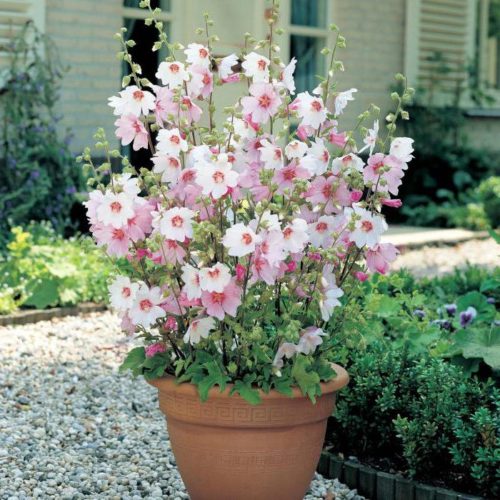
Lavatera flowers (Lat. Lavatera), or Ima, or wild rose, belong to the nature of trees, shrubs and herbs of the Malvian family. This genus is small - about 25 species of plants that grow most of all in Australia, Mediterranean and East Asia. The flower name was received in honor of Swiss naturalists and doctors known in the XVII century, the brothers by the name Lavater. A famous plant has become from the XVI century, however, popularity has increased about 20 years ago. It was impossible to find a garden where this plant would not grow with delicate and bright buds. In the modern world of the lavater retained its popularity as 20 years ago.
Description of flowers lavaters
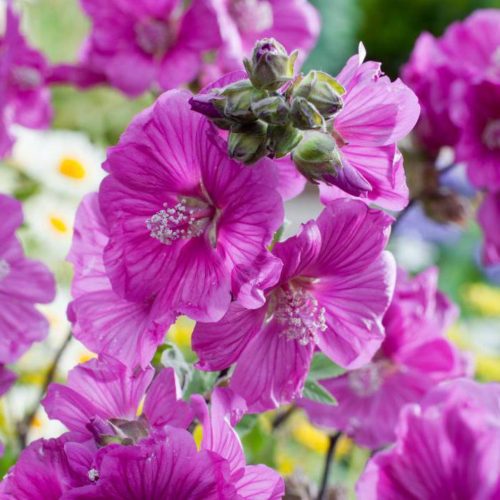
To date, thanks to the hard work of breeders, lavatera represented by two species: perennial and annual. The plant gets a height of 50-150 cm, has a well-developed root system, strong branches and a strong crown. Most of the types of lobed leaves, arranged in regular order, and are covered with hairs. Large to 10 cm in diameter buds grow singly or in several pieces and form end buds as KOLOSOV or brushes. As lavatera multi-year and annual lavatera is pink, magenta, yellow, and white colors purpunogo. In addition, these flowers are distinguished by a large flowering period - from early summer to mid-autumn. After cutting the flowers look fresh for over a week. This is one of the most unpretentious color: it is resistant to drought and strong winds, not demanding to soil conditions. Many believe that this flower was created for the lazy people who do not have time to waste.
Growing seeds lavatery
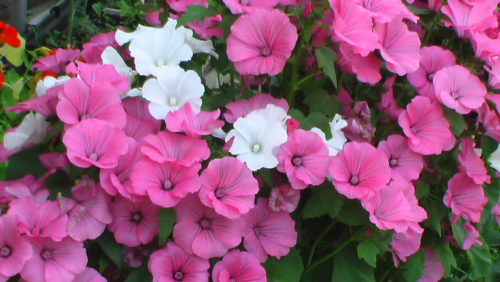
Most often, gardeners use a method of growing seedlings and therefore lavatery seeds are sown early enough, and depending on when you need to draw a garden or flower bed.
planting lavatery
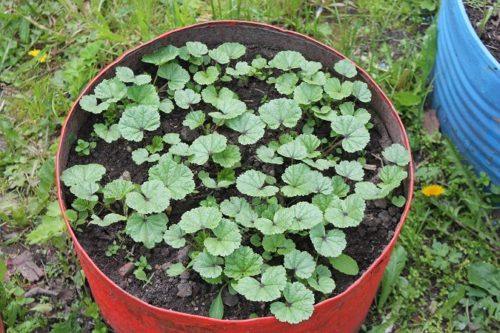
Seeds lavatery thrown in early March if you want to arrange the garden in May. So buy lavateru costs in the winter, or earlier. Sometimes the seeds are thrown before that in order to grow big and tall plants.
Lavateru to grow from the seeds using the seedling does not require a large amount of effort. Sow the seed in a container, usually to a depth of 1 cm. After 5-7 days the seedlings appear, which is very fast for color. Do not make too dense crops. The individual pots (preferably a diameter up to 5 cm) planting lavateru when a second pair of true leaves. The ground lavatery transplanted after spring frosts will.
In areas with warm climates lavateru thrown immediately in the open ground is usually in late April and early May. Before planting, the soil must be fertilized: 1 sq.m. 1 is brought bucket humus or compost, 2 tablespoons nitrophosphate. Further, the ground leveled, and there are small grooves with a depth of 1 cm. They spilled with warm water, then dry them seyatsya seeds lavatery. After planting ridge transparent cover film for heat preservation. About a week later the seeds germinate, and when it reaches a height of 5 cm, remove the foil and thin out seedlings. If time could not fertilize the soil before planting, it is possible to feed the plants after removing the cover.
Seating lavatery
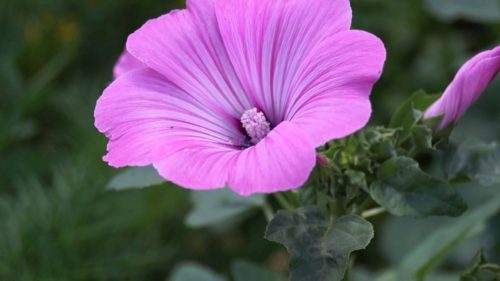
Growing the lavater is most often occurring by seating. However, before sowing, it is necessary to prepare the necessary containers. At the bottom of the boxes for seedlings, it is necessary to put drainage, and on top of the soil for seedlings, which can be purchased in specialized flower shops. Watering with warm water with the soil and putting on 1 cm deep into the seeds, you need to cover with a film or glass and put in place where a sufficient amount of light falls. Shoot will appear after 1-2 weeks. However, it is worth remembering that shoots are always light-headed, and with insufficient light, seedlings can drop and stretch out. Glass can be removed immediately after the seeds are sprouting. Before the transplantation of flowers should be careed as follows: it is necessary to moisten the soil and rotate shooters to the Sun in a circle so that they develop evenly.
Picking lavateri.
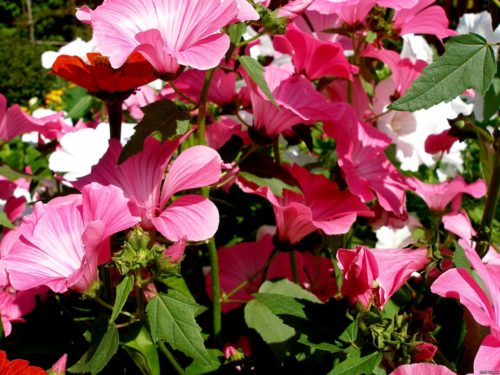
Basically, with a seed method of growing, lavater does not require dive. When the seedlings were strengthened and grown, they are immediately sad in an open ground. Many gardeners are still picking lavaters. When a second pair of real leaves appear, seedlings are transplanted into separate containers with a diameter of up to 5 cm.
Lavater care
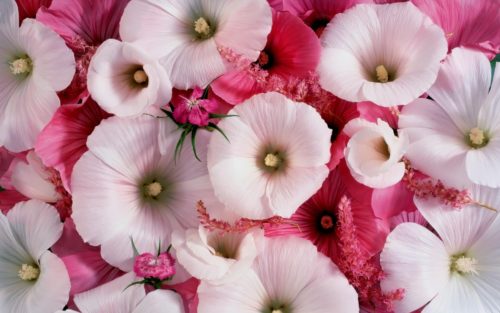
As mentioned above, the lavater is an unpretentious flower, it requires a minimum of care. This departure in regular watering, soil moisturizing. Lavatera Zasuchouplystazh, however, it is necessary once a week watering in the amount of 2-3 buckets on one big bush. With low temperatures and sufficient precipitation, the lavator can be water and less. In order for flowers to look neat and beautiful, it is worth taking scatteries and large bushes to supports. In addition, it serves as a guarantee that in the wind it will not break. As for the soil, it can be loosened only until a meter is achieved in height, because later there is probability to damage the surface root system. Also for a beautiful view is worth removing the colors, risking after the rain. If they are not removed, they turn into a mucous mass and can leave burns on the leaves. If we talk about feeding lavaters, then, mainly it is fed during transplantation, when you shoot. But it is not necessary to make a feeder if the soil feels before planting. The last feeding will be the time of formation of buds for their better flowering. The drawing composition is as follows: on 10 liters of water 1 dining room false sodium sulfate and potassium sulfate / 1 adult bush lavater.
Diseases lavater and its pests
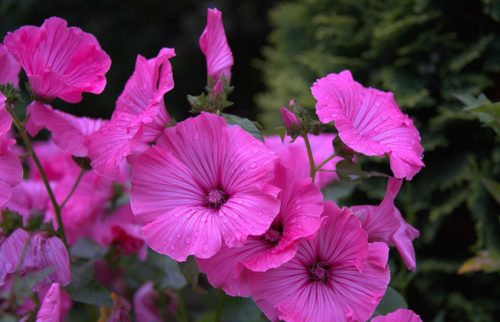
Do not be afraid of lavater pests. They are also easy to fight, because the defeat of the lavater is quite rare. If the garden plot was attacked, then she will affect the lavatar. The systemic preparations of Biotline, Aktar, or preparations of combined action - Aktellik, Akarin will help to eliminate this pest. It is worth sprinkling the plants and their buds. Cases occur when the lavater may suffer due to the so-called rust. This disease is manifested in the form of brown, brown or yellow spots on the underside of the leaves. These parts affected by the disease must be removed. The plant itself should be treated with topaz, a duplex or burglar liquid. If the plant is affected by more than 60%, then it is better to remove it and burn it.
Lavaert after flowering
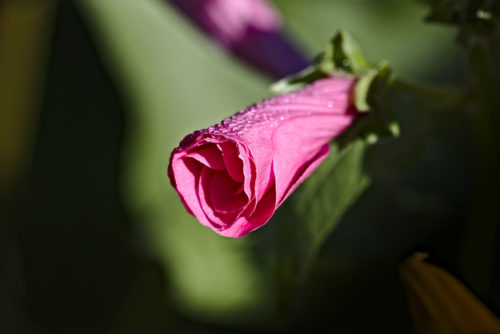
When the lavaterata wonders, and her flowers are tangled and fall, they will appear on their place a green box with seeds. However, you should not disrupt them immediately, you need to give mature. How to determine what seeds are ready to collect? The box will dry and change the color with green on brown. For accurate persuasiveness, you can open one box and look at the seeds dropped. The finished seeds have a gray-brown color, and they do not stick to the walls of the box, and easily fall out of it. The time of ripening seeds lavater is the beginning of autumn. To collect lavater seeds, you need to carefully cut the boxes and pour the seeds on paper. Then lear them on paper or newspaper in a well-purified room. Store seeds Lavaters are needed in a linen bag or bag of paper.
Lavateter annual after flowering
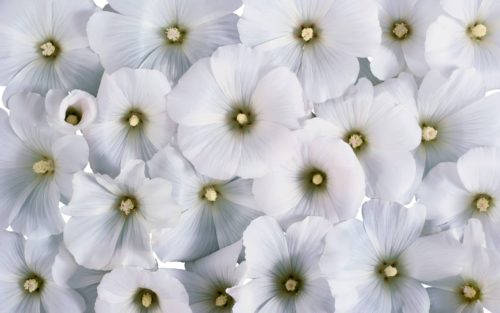
Lavateter annual after flowering is completely destroyed, and the soil, where it sat, is subject to resistance. It is worth considering that the lavater is a flower breeding by self-sowing, and therefore should not be surprised if the lavater flowers grow in the same place.
Lavateter long-term after flowering
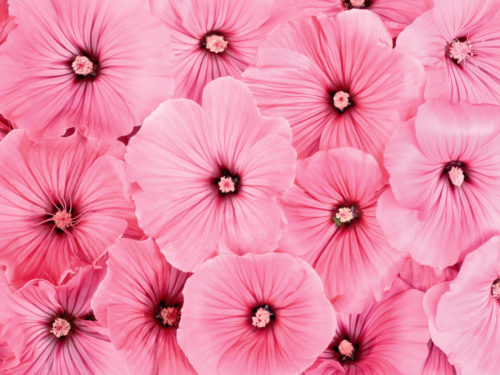
Lavaert perennial spends all year in the ground. To preserve the flower in the winter it is worth scorched to the ground as low as possible stems. In this position, they must be fixed and cover with underfloor material, and then dry leaves, batupy, sweetheart, etc.
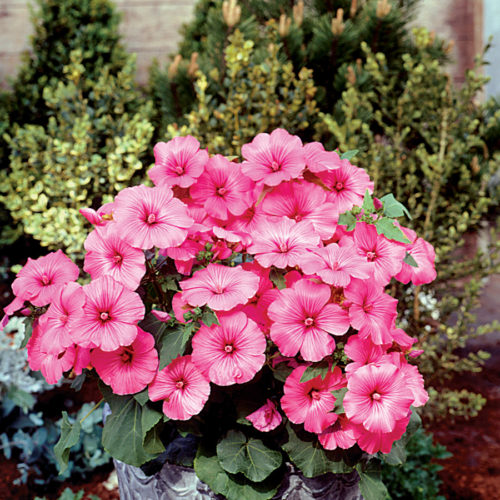
Lavaiter is not only a beautiful and unpretentious flower that will decorate any garden, this is a natural medicine. Flowers lavater possess healing properties. Therapeutic agents with lavater are used in the treatment of headaches, cough, colds, influenza, intestinal disorders, gastritis, lubrication in muscles and joints, gynecological diseases. In addition, healing fresh leaves of some types of lavaters in the treatment of lichen, non-healing wounds, boils or other purulent diseases.

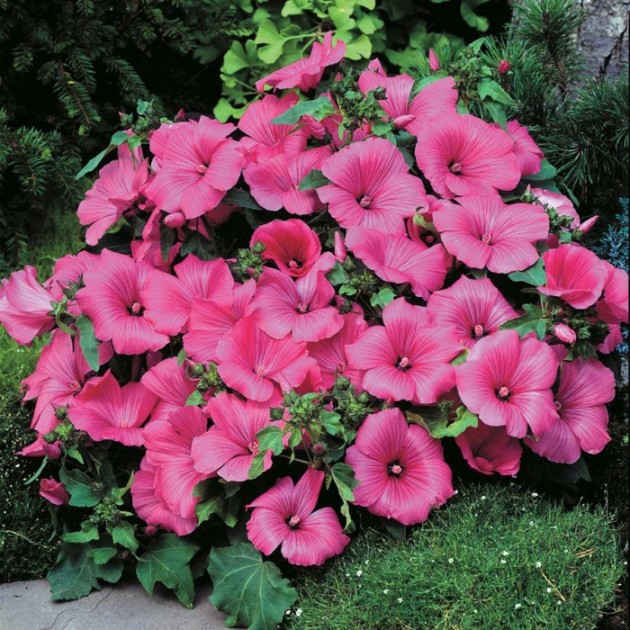












 Start a discussion ...
Start a discussion ...